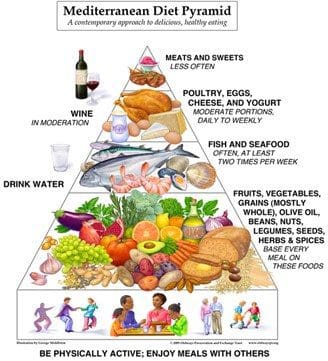1. Nurmatov, U.; Devereux, G.; Sheikh, A. Nutrients and foods for the primary prevention of asthma
and allergy: Systematic review and meta-analysis. J. Allergy Clin. Immunol. 2011, 127,
724�733.e30.
2. Varraso, R.; Fung, T.T.; Barr, R.G.; Hu, F.B.; Willett, W.; Camargo, C.A.J. Prospective study of
dietary patterns and chronic obstructive pulmonary disease among US women. Am. J. Clin. Nutr.
2007, 86, 488�495.
3. Shaheen, S.O.; Jameson, K.A.; Syddall, H.E.; Aihie Sayer, A.; Dennison, E.M.; Cooper, C.;
Robinson, S.M.; Hertfordshire Cohort Study Group. The relationship of dietary patterns with adult
lung function and COPD. Eur. Respir. J. 2010, 36, 277�284.
4. Scott, H.A.; Jensen, M.E.; Wood, L.G. Dietary interventions in asthma. Curr. Pharm. Des. 2014,
20, 1003�1010.
5. Global Initiative for Asthma (GINA). Global Strategy for Asthma Management and Prevention
2012 (update). Available online: http://www.ginasthma.org (accessed on 30 July 2013).
6. Global Initiative for Chronic Obstructive Lung Disease (GOLD). Global Strategy for the
Diagnosis, Management and Prevention of COPD. Available online: http://www.goldcopd.org/
(accessed on 3 December 2014).
7. Saadeh, D.; Salameh, P.; Baldi, I.; Raherison, C. Diet and allergic diseases among population aged
0 to 18 years: Myth or reality? Nutrients 2013, 5, 3399�3423.
8. Willett, W.C.; Sacks, F.; Trichopoulou, A.; Drescher, G.; Ferro-Luzzi, A.; Helsing, E.;
Trichopoulos, D. Mediterranean diet pyramid: A cultural model for healthy eating. Am. J. Clin.
Nutr. 1995, 61, 1402S�1406S.
9. Arvaniti, F.; Priftis, K.N.; Papadimitriou, A.; Papadopoulos, M.; Roma, E.; Kapsokefalou, M.;
Anthracopoulos, M.B.; Panagiotakos, D.B. Adherence to the Mediterranean type of diet is associated
with lower prevalence of asthma symptoms, among 10�12 years old children: The PANACEA
study. Pediatr. Allergy Immunol. 2011, 22, 283�289.
10. Chatzi, L.; Kogevinas, M. Prenatal and childhood Mediterranean diet and the development of
asthma and allergies in children. Public Health Nutr. 2009, 12, 1629�1634.
11. De Batlle, J.; Garcia-Aymerich, J.; Barraza-Villarreal, A.; Ant�, J.M.; Romieu, I. Mediterranean
diet is associated with reduced asthma and rhinitis in Mexican children. Allergy 2008, 63,
1310�1316.
12. Chatzi, L.; Torrent, M.; Romieu, I.; Garcia-Esteban, R.; Ferrer, C.; Vioque, J.; Kogevinas, M.;
Sunyer, J. Mediterranean diet in pregnancy is protective for wheeze and atopy in childhood. Thorax
2008, 63, 507�513.
13. Barros, R.; Moreira, A.; Fonseca, J.; de Oliveira, J.F.; Delgado, L.; Castel-Branco, M.G.; Haahtela,
T.; Lopes, C.; Moreira, P. Adherence to the Mediterranean diet and fresh fruit intake are associated
with improved asthma control. Allergy 2008, 63, 917�923.
14. Wood, L.G.; Gibson, P.G. Dietary factors lead to innate immune activation in asthma. Pharmacol.
Ther. 2009, 123, 37�53.
15. Carey, O.J.; Cookson, J.B.; Britton, J.; Tattersfield, A.E. The effect of lifestyle on wheeze, atopy,
and bronchial hyperreactivity in Asian and white children. Am. J. Respir. Crit. Care Med. 1996, 154,
537�540.
16. Huang, S.L.; Lin, K.C.; Pan, W.H. Dietary factors associated with physician-diagnosed asthma and
allergic rhinitis in teenagers: Analyses of the first Nutrition and Health Survey in Taiwan. Clin.
Exp. Allergy 2001, 31, 259�264.
17. Wickens, K.; Barry, D.; Friezema, A.; Rhodius, R.; Bone, N.; Purdie, G.; Crane, J. Fast foods�
Are they a risk factor for asthma? Allergy 2005, 60, 1537�1541.
18. Hijazi, N.; Abalkhail, B.; Seaton, A. Diet and childhood asthma in a society in transition: A study
in urban and rural Saudi Arabia. Thorax 2000, 55, 775�779.
19. Varraso, R.; Kauffmann, F.; Leynaert, B.; Le Moual, N.; Boutron-Ruault, M.C.; Clavel-Chapelon,
F.; Romieu, I. Dietary patterns and asthma in the E3N study. Eur. Respir. J. 2009, 33, 33�41.
20. Wood, L.G.; Garg, M.L.; Gibson, P.G. A high-fat challenge increases airway inflammation and
impairs bronchodilator recovery in asthma. J. Allergy Clin. Immunol. 2011, 127, 1133�1140.
21. Netting, M.J.; Middleton, P.F.; Makrides, M. Does maternal diet during pregnancy and lactation
affect outcomes in offspring? A systematic review of food-based approaches. Nutrition 2014, 30,
1225�1241.
22. Grieger, J.; Wood, L.; Clifton, V. Improving asthma during pregnancy with dietary antioxidants:
The current evidence. Nutrients 2013, 5, 3212�3234.
23. Butland, B.K.; Fehily, A.M.; Elwood, P.C. Diet, lung function, and lung function decline in
a cohort of 2512 middle aged men. Thorax 2000, 55, 102�108.
24. Carey, I.M.; Strachan, D.P.; Cook, D.G. Effects of changes in fresh fruit consumption on
ventilatory function in healthy British adults. Am. J. Respir. Crit. Care Med. 1998, 158, 728�733.
25. Wood, L.G.; Garg, M.L.; Smart, J.M.; Scott, H.A.; Barker, D.; Gibson, P.G. Manipulating
antioxidant intake in asthma: A randomized controlled trial. Am. J. Clin. Nutr. 2012, 96, 534�543.
26. Seyedrezazadeh, E.; Moghaddam, M.P.; Ansarin, K.; Vafa, M.R.; Sharma, S.; Kolahdooz, F. Fruit
and vegetable intake and risk of wheezing and asthma: A systematic review and meta-analysis. Nutr.
Rev. 2014, 72, 411�428.
27. Erkkola, M.; Nwaru, B.I.; Kaila, M.; Kronberg-Kippil�, C.; Ilonen, J.; Simell, O.; Veijola, R.;
Knip, M.; Virtanen, S.M. Risk of asthma and allergic outcomes in the offspring in relation to
maternal food consumption during pregnancy: A Finnish birth cohort study. Pediatr. Allergy
Immunol. 2012, 23, 186�194.
28. Fitzsimon, N.; Fallon, U.; O�Mahony, D.; Loftus, B.G.; Bury, G.; Murphy, A.W.; Kelleher, C.C.;
Lifeways Cross Generation Cohort Study Steering Group. Mother�s dietary patterns during
pregnancy and risk of asthma symptoms in children at 3 years. Ir. Med. J. 2007, 100, 27�32.
29. Baldrick, F.R.; Elborn, J.S.; Woodside, J.V.; Treacy, K.; Bradley, J.M.; Patterson, C.C.;
Schock, B.C.; Ennis, M.; Young, I.S.; McKinley, M.C. Effect of fruit and vegetable intake on
oxidative stress and inflammation in COPD: A randomised controlled trial. Eur. Respir. J. 2012, 39,
1377�1384.
30. Keranis, E.; Makris, D.; Rodopoulou, P.; Martinou, H.; Papamakarios, G.; Daniil, Z.; Zintzaras, E.;
Gourgoulianis, K.I. Impact of dietary shift to higher-antioxidant foods in COPD: A randomised
trial. Eur. Respir. J. 2010, 36, 774�780.
31. Thies, F.; Miles, E.A.; Nebe-von-Caron, G.; Powell, J.R.; Hurst, T.L.; Newsholme, E.A.;
Calder, P.C. Influence of dietary supplementation with long-chain n-3 or n-6 polyunsaturated fatty
acids on blood inflammatory cell populations and functions and on plasma soluble adhesion
molecules in healthy adults. Lipids 2001, 36, 1183�1193.
32. Kelley, D.S.; Taylor, P.C.; Nelson, G.J.; Schmidt, P.C.; Ferretti, A.; Erickson, K.L.; Yu, R.;
Chandra, R.K.; Mackey, B.E. Docosahexaenoic acid ingestion inhibits natural killer cell activity
and production of inflammatory mediators in young healthy men. Lipids 1999, 34, 317�324.
33. Lo, C.J.; Chiu, K.C.; Fu, M.; Chu, A.; Helton, S. Fish oil modulates macrophage P44/P42 mitogenactivated
protein kinase activity induced by lipopolysaccharide. J. Parenter. Enter. Nutr. 2000, 24,
159�163.
34. Calder, P.C. n-3 Polyunsaturated fatty acids, inflammation, and inflammatory diseases. Am. J. Clin.
Nutr. 2006, 83, 1505S�1519S.
35. Peat, J.K.; Salome, C.M.; Woolcock, A.J. Factors associated with bronchial hyperresponsiveness
in Australian adults and children. Eur. Respir. J. 1992, 5, 921�929.
36. Tabak, C.; Wijga, A.H.; de Meer, G.; Janssen, N.A.; Brunekreef, B.; Smit, H.A. Diet and asthma
in Dutch school children (ISAAC-2). Thorax 2006, 61, 1048�1053.
37. Takemura, Y.; Sakurai, Y.; Honjo, S.; Tokimatsu, A.; Tokimatsu, A.; Gibo, M.; Hara, T.; Kusakari,
A.; Kugai, N. The relationship between fish intake and the prevalence of asthma: The Tokorozawa
childhood asthma and pollinosis study. Prev. Med. 2002, 34, 221�225.
38. De Luis, D.A.; Armentia, A.; Aller, R.; Asensio, A.; Sedano, E.; Izaola, O.; Cuellar, L. Dietary
intake in patients with asthma: A case control study. Nutrition 2005, 21, 320�324.
39. Laerum, B.N.; Wentzel-Larsen, T.; Gulsvik, A.; Omenaas, E.; Gislason, T.; Janson, C.; Svanes, C.
Relationship of fish and cod oil intake with adult asthma. Clin. Exp. Allergy 2007, 37, 1616�1623.
40. McKeever, T.M.; Lewis, S.A.; Cassano, P.A.; Ocke, M.; Burney, P.; Britton, J.; Smit, H.A.
The relation between dietary intake of individual fatty acids, FEV1 and respiratory disease in Dutch
adults. Thorax 2008, 63, 208�214.
41. Salam, M.T.; Li, Y.F.; Langholz, B.; Gilliland, F.D. Maternal fish consumption during pregnancy
and risk of early childhood asthma. J. Asthma 2005, 42, 513�518.
42. Klemens, C.M.; Berman, D.R.; Mozurkewich, E.L. The effect of perinatal omega-3 fatty acid
supplementation on inflammatory markers and allergic diseases: A systematic review. BJOG 2011,
118, 916�925.
43. Thien, F.C.K.; Woods, R.; De Luca, S.; Abramson, M.J. Dietary marine fatty acids (fish oil) for
asthma in adults and children (Cochrane Review). In The Cochrane Library; John Wiley & Sons,
Ltd.: Chichester, UK, 2002 (updated 2010).
44. Shahar, E.; Boland, L.L.; Folsom, A.R.; Tockman, M.S.; McGovern, P.G.; Eckfeldt, J.H.
Docosahexaenoic acid and smoking-related chronic obstructive pulmonary disease. Am. J. Respir.
Crit. Care Med. 1999, 159, 1780�1785.
45. De Batlle, J.; Sauleda, J.; Balcells, E.; G�mez, F.P.; M�ndez, M.; Rodriguez, E.; Barreiro, E.;
Ferrer, J.J.; Romieu, I.; Gea, J.; et al. Association between ?3 and ?6 fatty acid intakes and serum
inflammatory markers in COPD. J. Nutr. Biochem. 2012, 23, 817�821.
46. Broekhuizen, R.; Wouters, E.F.; Creutzberg, E.C.; Weling-Scheepers, C.A.; Schols, A.M.
Polyunsaturated fatty acids improve exercise capacity in chronic obstructive pulmonary disease.
Thorax 2005, 60, 376�382.
47. Fulton, A.S.; Hill, A.M.; Williams, M.T.; Howe, P.R.; Frith, P.A.; Wood, L.G.; Garg, M.L.;
Coates, A.M. Feasibility of omega-3 fatty acid supplementation as an adjunct therapy for people
with chronic obstructive pulmonary disease: Study protocol for a randomized controlled trial.
Trials 2013, 14, 107.
48. Texas A&M University, USA. Eicosapentaenoic Acid and Protein Modulation to Induce Anabolism
in Chronic Obstructive Pulmonary Disease (COPD): Aim 2 NLM Identifier: NCT01624792.
Available online: https://clinicaltrials.gov/ct2/show/NCT01624792 (accessed on 29 September 2014).
49. National Institute of Environmental Health Sciences; Columbia University, USA. The Chronic
Obstructive Pulmonary Disease Fish Oil Pilot Trial (COD-Fish). Available online:
http://clinicaltrials.gov/show/NCT00835289 (accessed on 29 September 2014).
50. Wood, L.G.; Gibson, P.G.; Garg, M.L. Biomarkers of lipid peroxidation, airway inflammation and
asthma. Eur. Respir. J. 2003, 21, 177�186.
51. Kelly, F.J. Vitamins and respiratory disease: Antioxidant micronutrients in pulmonary health and
disease. Proc. Nutr. Soc. 2005, 64, 510�526.
52. Rahman, I. Oxidative stress, chromatin remodeling and gene transcription in inflammation and
chronic lung diseases. J. Biochem. Mol. Biol. 2003, 36, 95�109.
53. Ochs-Balcom, H.M.; Grant, B.J.; Muti, P.; Sempos, C.T.; Freudenheim, J.L.; Browne, R.W.;
McCann, S.E.; Trevisan, M.; Cassano, P.A.; Iacoviello, L.; et al. Antioxidants, oxidative stress,
and pulmonary function in individuals diagnosed with asthma or COPD. Eur. J. Clin. Nutr. 2006, 60,
991�999.
54. Wood, L.G.; Garg, M.L.; Powell, H.; Gibson, P.G. Lycopene-rich treatments modify
noneosinophilic airway inflammation in asthma: Proof of concept. Free Radic. Res. 2008, 42,
94�102.
55. Clifton, V.L.; Vanderlelie, J.; Perkins, A.V. Increased anti-oxidant enzyme activity and biological
oxidation in placentae of pregnancies complicated by maternal asthma. Placenta 2005, 26, 773�779.
56. McLernon, P.C.; Wood, L.G.; Murphy, V.E.; Hodyl, N.A.; Clifton, V.L. Circulating antioxidant
profile of pregnant women with asthma. Clin. Nutr. 2012, 31, 99�107.
57. Miyake, Y.; Sasaki, S.; Tanaka, K.; Hirota, Y. Dairy food, calcium and vitamin D intake in
pregnancy, and wheeze and eczema in infants. Eur. Respir. J. 2010, 35, 1228�1234.
58. Kumar, R. Prenatal factors and the development of asthma. Curr. Opin. Pediatr. 2008, 20,
682�687.
59. Bowie, A.G.; O�Neill, L.A. Vitamin C inhibits NF-kappa B activation by TNF via the activation
of p38 mitogen-activated protein kinase. J. Immunol. 2000, 165, 7180�7188.
60. Jeong, Y.-J.; Kim, J.-H.; Kang, J.S.; Lee, W.J.; Hwang, Y. Mega-dose vitamin C attenuated lung
inflammation in mouse asthma model. Anat. Cell Biol. 2010, 43, 294�302.
61. Chang, H.-H.; Chen, C.-S.; Lin, J.-Y. High Dose Vitamin C Supplementation Increases the
Th1/Th2 Cytokine Secretion Ratio, but Decreases Eosinophilic Infiltration in Bronchoalveolar
Lavage Fluid of Ovalbumin-Sensitized and Challenged Mice. J. Agric. Food Chem. 2009, 57,
10471�10476.
62. Forastiere, F.; Pistelli, R.; Sestini, P.; Fortes, C.; Renzoni, E.; Rusconi, F.; Dell�Orco, V.; Ciccone,
G.; Bisanti, L. The SIDRIA Collaborative Group, I. Consumption of fresh fruit rich in vitamin C
and wheezing symptoms in children. Thorax 2000, 55, 283�288.
63. Emmanouil, E.; Manios, Y.; Grammatikaki, E.; Kondaki, K.; Oikonomou, E.; Papadopoulos, N.;
Vassilopoulou, E. Association of nutrient intake and wheeze or asthma in a Greek pre-school
population. Pediatr. Allergy Immunol. 2010, 21, 90�95.
64. Cook, D.G.; Carey, I.M.; Whincup, P.H.; Papacosta, O.; Chirico, S.; Bruckdorfer, K.R.; Walker, M.
Effect of fresh fruit consumption on lung function and wheeze in children. Thorax 1997, 52,
628�633.
65. Schwartz, J.; Weiss, S.T. Relationship between dietary vitamin C intake and pulmonary function
in the First National Health and Nutrition Examination Survey (NHANES I). Am. J. Clin. Nutr.
1994, 59, 110�114.
66. Shaheen, S.O.; Sterne, J.A.; Thompson, R.L.; Songhurst, C.E.; Margetts, B.M.; Burney, P.G.
Dietary antioxidants and asthma in adults: Population-based case-control study. Am. J. Respir. Crit.
Care Med. 2001, 164, 1823�1828.
67. Koike, K.; Ishigami, A.; Sato, Y.; Hirai, T.; Yuan, Y.; Kobayashi, E.; Tobino, K.; Sato, T.; Sekiya,
M.; Takahashi, K.; et al. Vitamin C Prevents Cigarette Smoke�Induced Pulmonary Emphysema in
Mice and Provides Pulmonary Restoration. Am. J. Respir. Cell Mol. Biol. 2013, 50, 347�357.
68. Lin, Y.C.; Wu, T.C.; Chen, P.Y.; Hsieh, L.Y.; Yeh, S.L. Comparison of plasma and intake levels
of antioxidant nutrients in patients with chronic obstructive pulmonary disease and healthy people
in Taiwan: A case-control study. Asia Pac. J. Clin. Nutr. 2010, 19, 393�401.
69. Sargeant, L.A.; Jaeckel, A.; Wareham, N.J. Interaction of vitamin C with the relation between
smoking and obstructive airways disease in EPIC Norfolk. European Prospective Investigation into
Cancer and Nutrition. Eur. Respir. J. 2000, 16, 397�403.
70. Brigelius-Flohe, R.; Traber, M.G. Vitamin E: Function and metabolism. FASEB J. 1999, 13,
1145�1155.
71. Huang, J.; May, J.M. Ascorbic acid spares ?-tocopherol and prevents lipid peroxidation in cultured
H4IIE liver cells. Mol. Cell. Biochem. 2003, 247, 171�176.
72. Abdala-Valencia, H.; Berdnikovs, S.; Cook-Mills, J. Vitamin E isoforms as modulators of lung
inflammation. Nutrients 2013, 5, 4347�4363.
73. Mabalirajan, U.; Aich, J.; Leishangthem, G.D.; Sharma, S.K.; Dinda, A.K.; Ghosh, B. Effects of
vitamin E on mitochondrial dysfunction and asthma features in an experimental allergic murine
model. J. Appl. Physiol. 2009, 107, 1285�1292.
74. McCary, C.A.; Abdala-Valencia, H.; Berdnikovs, S.; Cook-Mills, J.M. Supplemental and highly
elevated tocopherol doses differentially regulate allergic inflammation: Reversibility of ?-tocopherol
and ?-tocopherol�s effects. J. Immunol. 2011, 186, 3674�3685.
75. He, Y.; Franchi, L.; Nunez, G. The protein kinase PKR is critical for LPS-induced iNOS production
but dispensable for inflammasome activation in macrophages. Eur. J. Immunol. 2013, 43, 1147�1152.
76. Fakhrzadeh, L.; Laskin, J.D.; Laskin, D.L. Ozone-induced production of nitric oxide and TNF-?
and tissue injury are dependent on NF-kappaB p50. Am. J. Physiol. Lung Cell. Mol. Physiol. 2004,
287, L279�L285.
77. Hernandez, M.L.; Wagner, J.G.; Kala, A.; Mills, K.; Wells, H.B.; Alexis, N.E.; Lay, J.C.; Jiang, Q.;
Zhang, H.; Zhou, H.; et al. Vitamin E, ?-tocopherol, reduces airway neutrophil recruitment after
inhaled endotoxin challenge in rats and in healthy volunteers. Free Radic. Biol. Med. 2013, 60,
56�62.
78. Dow, L.; Tracey, M.; Villar, A.; Coggon, D.; Margetts, B.M.; Campbell, M.J.; Holgate, S.T. Does
dietary intake of vitamins C and E influence lung function in older people? Am. J. Respir. Crit.
Care Med. 1996, 154, 1401�1404.
79. Smit, H.A.; Grievink, L.; Tabak, C. Dietary influences on chronic obstructive lung disease and
asthma: A review of the epidemiological evidence. Proc. Nutr. Soc. 1999, 58, 309�319.
80. Tabak, C.; Smit, H.A.; Rasanen, L.; Fidanza, F.; Menotti, A.; Nissinen, A.; Feskens, E.J.; Heederik,
D.; Kromhout, D. Dietary factors and pulmonary function: A cross sectional study in middle aged
men from three European countries. Thorax 1999, 54, 1021�1026.
81. Weiss, S.T. Diet as a risk factor for asthma. Ciba Found. Symp. 1997, 206, 244�257.
82. Troisi, R.J.; Willett, W.C.; Weiss, S.T.; Trichopoulos, D.; Rosner, B.; Speizer, F.E. A prospective
study of diet and adult-onset asthma. Am. J. Respir. Crit. Care Med. 1995, 151, 1401�1408.
83. Devereux, G.; Seaton, A. Diet as a risk factor for atopy and asthma. J. Allergy Clin. Immonol.
2005, 115, 1109�1117.
84. Tug, T.; Karatas, F.; Terzi, S.M. Antioxidant vitamins (A, C and E) and malondialdehyde levels in
acute exacerbation and stable periods of patients with chronic obstructive pulmonary disease. Clin.
Investig. Med. 2004, 27, 123�128.
85. Daga, M.K.; Chhabra, R.; Sharma, B.; Mishra, T.K. Effects of exogenous vitamin E supplementation
on the levels of oxidants and antioxidants in chronic obstructive pulmonary disease. J. Biosci.
2003, 28, 7�11.
86. Wu, T.C.; Huang, Y.C.; Hsu, S.Y.; Wang, Y.C.; Yeh, S.L. Vitamin E and vitamin C supplementation
in patients with chronic obstructive pulmonary disease. Int. J. Vitam. Nutr. Res. 2007, 77,
272�279.
87. Agler, A.H.; Kurth, T.; Gaziano, J.M.; Buring, J.E.; Cassano, P.A. Randomised vitamin E
supplementation and risk of chronic lung disease in the Women�s Health Study. Thorax 2011, 66,
320�325.
88. West, C.E.; Dunstan, J.; McCarthy, S.; Metcalfe, J.; D�Vaz, N.; Meldrum, S.; Oddy, W.H.;
Tulic, M.K.; Prescott, S.L. Associations between maternal antioxidant intakes in pregnancy and
infant allergic outcomes. Nutrients 2012, 4, 1747�1758.
89. Abdala-Valencia, H.; Berdnikovs, S.; Soveg, F.W.; Cook-Mills, J.M. ?-Tocopherol Supplementation
of Allergic Female Mice Inhibits Development of CD11c+CD11b+ Dendritic Cells in Utero and
Allergic Inflammation in Neonates. Am. J. Physiol. Lung Cell. Mol. Physiol. 2014, 307, L482�L496.
90. Litonjua, A.A.; Rifas-Shiman, S.L.; Ly, N.P.; Tantisira, K.G.; Rich-Edwards, J.W.;
Camargo, C.A., Jr.; Weiss, S.T.; Gillman, M.W.; Gold, D.R. Maternal antioxidant intake in
pregnancy and wheezing illnesses in children at 2 year of age. Am. J. Clin. Nutr. 2006, 84, 903�911.
91. Miyake, Y.; Sasaki, S.; Tanaka, K.; Hirota, Y. Consumption of vegetables, fruit, and antioxidants
during pregnancy and wheeze and eczema in infants. Allergy 2010, 65, 758�765.
92. Devereux, G.; Turner, S.W.; Craig, L.C.; McNeill, G.; Martindale, S.; Harbour, P.J.; Helms, P.J.;
Seaton, A. Low maternal vitamin E intake during pregnancy is associated with asthma in 5-year-old
children. Am. J. Respir. Crit. Care Med. 2006, 174, 499�507.
93. Devereux, G.; Barker, R.N.; Seaton, A. Antenatal determinants of neonatal immune responses to
allergens. Clin. Exp. Allergy 2002, 32, 43�50.
94. Wassall, H.; Devereux, G.; Seaton, A.; Barker, R. Complex effects of vitamin E and vitamin C
supplementation on in vitro neonatal mononuclear cell responses to allergens. Nutrients 2013, 5,
3337�3351.
95. Tanaka, T.; Takahashi, R. Flavonoids and asthma. Nutrients 2013, 5, 2128�2143.
96. Manach, C.; Scalbert, A.; Morand, C.; Remesy, C.; Jimenez, L. Polyphenols: Food sources and
bioavailability. Am. J. Clin. Nutr. 2004, 79, 727�747.
97. Hirano, T.; Higa, S.; Arimitsu, J.; Naka, T.; Shima, Y.; Ohshima, S.; Fujimoto, M.; Yamadori, T.;
Kawase, I.; Tanaka, T. Flavonoids such as luteolin, fisetin and apigenin are inhibitors of
interleukin-4 and interleukin-13 production by activated human basophils. Int. Arch. Allergy
Immunol. 2004, 134, 135�140.
98. Kawai, M.; Hirano, T.; Higa, S.; Arimitsu, J.; Maruta, M.; Kuwahara, Y.; Ohkawara, T.; Hagihara,
K.; Yamadori, T.; Shima, Y.; et al. Flavonoids and related compounds as anti-allergic substances.
Allergol. Int. 2007, 56, 113�123.
99. Nair, M.P.; Mahajan, S.; Reynolds, J.L.; Aalinkeel, R.; Nair, H.; Schwartz, S.A.; Kandaswami, C.
The flavonoid quercetin inhibits proinflammatory cytokine (tumor necrosis factor alpha) gene
expression in normal peripheral blood mononuclear cells via modulation of the NF-kappa beta
system. Clin. Vaccine Immunol. 2006, 13, 319�328.
100. Nair, M.P.N.; Kandaswami, C.; Mahajan, S.; Chadha, K.C.; Chawda, R.; Nair, H.; Kumar, N.;
Nair, R.E.; Schwartz, S.A. The flavonoid, quercetin, differentially regulates Th-1 (IFN?) and Th-2
(IL4) cytokine gene expression by normal peripheral blood mononuclear cells. Biochim. Biophys.
Acta Mol. Cell Res. 2002, 1593, 29�36.
101. Leemans, J.; Cambier, C.; Chandler, T.; Billen, F.; Clercx, C.; Kirschvink, N.; Gustin, P.
Prophylactic effects of omega-3 polyunsaturated fatty acids and luteolin on airway
hyperresponsiveness and inflammation in cats with experimentally-induced asthma. Vet. J.
2010, 184, 111�114.
102. Li, R.R.; Pang, L.L.; Du, Q.; Shi, Y.; Dai, W.J.; Yin, K.S. Apigenin inhibits allergen-induced
airway inflammation and switches immune response in a murine model of asthma.
Immunopharmacol. Immunotoxicol. 2010, 32, 364�370.
103. Wu, M.Y.; Hung, S.K.; Fu, S.L. Immunosuppressive effects of fisetin in ovalbumin-induced
asthma through inhibition of NF-kB activity. J. Agric. Food Chem. 2011, 59, 10496�10504.
104. Rogerio, A.P.; Kanashiro, A.; Fontanari, C.; da Silva, E.V.G.; Lucisano-Valim, Y.M.; Soares, E.G.;
Faccioli, L.H. Anti-inflammatory activity of quercetin and isoquercitrin in experimental murine
allergic asthma. Inflamm. Res. 2007, 56, 402�408.
105. Garcia, V.; Arts, I.C.; Sterne, J.A.; Thompson, R.L.; Shaheen, S.O. Dietary intake of flavonoids
and asthma in adults. Eur. Respir. J. 2005, 26, 449�452.
106. Belcaro, G.; Luzzi, R.; Cesinaro di Rocco, P.; Cesarone, M.R.; Dugall, M.; Feragalli, B.;
Errichi, B.M.; Ippolito, E.; Grossi, M.G.; Hosoi, M.; et al. Pycnogenol improvements in asthma
management. Panminerva Med. 2011, 53, 57�64.
107. Willers, S.M.; Devereux, G.; Craig, L.C.A.; McNeill, G.; Wijga, A.H.; Abou El-Magd, W.; Turner,
S.W.; Helms, P.J.; Seaton, A. Maternal food consumption during pregnancy and asthma,
respiratory and atopic symptoms in 5-year-old children. Thorax 2007, 62, 773�779.
108. Holick, M.F. Vitamin D deficiency. N. Engl. J. Med. 2007, 357, 266�281.
109. Hart, P.H.; Lucas, R.M.; Walsh, J.P.; Zosky, G.R.; Whitehouse, A.J.O.; Zhu, K.; Allen, K.L.;
Kusel, M.M.; Anderson, D.; Mountain, J.A. Vitamin D in Fetal Development: Findings From
a Birth Cohort Study. Pediatrics 2014, doi:10.1542/peds.2014-1860.
110. Hart, P.H.; Gorman, S.; Finlay-Jones, J.J. Modulation of the immune system by UV radiation:
More than just the effects of vitamin D? Nat. Rev. Immunol. 2011, 11, 584�596.
111. Foong, R.; Zosky, G. Vitamin D deficiency and the lung: Disease initiator or disease modifier?
Nutrients 2013, 5, 2880�2900.
112. Hiemstra, P.S. The role of epithelial ?-defensins and cathelicidins in host defense of the lung. Exp.
Lung Res. 2007, 33, 537�542.
113. Martinesi, M.; Bruni, S.; Stio, M.; Treves, C. 1,25-Dihydroxyvitamin D3 inhibits tumor necrosis
factor-?-induced adhesion molecule expression in endothelial cells. Cell Biol. Int. 2006, 30,
365�375.
114. Song, Y.; Qi, H.; Wu, C. Effect of 1,25-(OH)2D3 (a vitamin D analogue) on passively sensitized
human airway smooth muscle cells. Respirology 2007, 12, 486�494.
115. Zosky, G.R.; Berry, L.J.; Elliot, J.G.; James, A.L.; Gorman, S.; Hart, P.H. Vitamin D deficiency
causes deficits in lung function and alters lung structure. Am. J. Respir. Crit. Care Med. 2011, 183,
1336�1343.
116. Pichler, J.; Gerstmayr, M.; Szepfalusi, Z.; Urbanek, R.; Peterlik, M.; Willheim, M. 1?,25(OH)2D3
inhibits not only Th1 but also Th2 differentiation in human cord blood T cells. Pediatr. Res. 2002,
52, 12�18.
117. Gupta, A.; Sjoukes, A.; Richards, D.; Banya, W.; Hawrylowicz, C.; Bush, A.; Saglani, S.
Relationship between serum vitamin D, disease severity and airway remodeling in children with
asthma. Am. J. Respir. Crit. Care Med. 2011, 184, 1342�1349.
118. Brehm, J.M.; Schuemann, B.; Fuhlbrigge, A.L.; Hollis, B.W.; Strunk, R.C.; Zeiger, R.S.; Weiss,
S.T.; Litonjua, A.A. Serum vitamin D levels and severe asthma exacerbations in the Childhood
Asthma Management Program study. J. Allergy Clin. Immonol. 2010, 126, 52�58.
119. Zosky, G.R.; Hart, P.H.; Whitehouse, A.J.; Kusel, M.M.; Ang, W.; Foong, R.E.; Chen, L.; Holt, P.G.;
Sly, P.D.; Hall, G.L. Vitamin D deficiency at 16 to 20 weeks� gestation is associated with impaired
lung function and asthma at 6 years of age. Ann. Am. Thorac. Soc. 2014, 11, 571�577.
120. Searing, D.A.; Zhang, Y.; Murphy, J.R.; Hauk, P.J.; Goleva, E.; Leung, D.Y. Decreased serum
vitamin D levels in children with asthma are associated with increased corticosteroid use. J. Allergy
Clin. Immonol. 2010, 125, 995�1000.
121. Xystrakis, E.; Kusumakar, S.; Boswell, S.; Peek, E.; Urry, Z.; Richards, D.F.; Adikibi, T.;
Pridgeon, C.; Dallman, M.; Loke, T.K.; et al. Reversing the defective induction of IL-10 secreting
regulatory T cells in glucocorticoid-resistant asthma patients. J. Clin. Investig. 2006, 116,
146�155.
122. Castro, M.; King, T.S.; Kunselman, S.J.; Cabana, M.D.; Denlinger, L.; Holguin, F.; Kazani, S.D.;
Moore, W.C.; Moy, J.; Sorkness, C.A.; et al. Effect of vitamin D3 on asthma treatment failures in
adults with symptomatic asthma and lower vitamin D levels: The VIDA randomized clinical trial.
JAMA 2014, 311, 2083�2091.
123. Janssens, W.; Bouillon, R.; Claes, B.; Carremans, C.; Lehouck, A.; Buysschaert, I.; Coolen, J.;
Mathieu, C.; Decramer, M.; Lambrechts, D. Vitamin D deficiency is highly prevalent in COPD
and correlates with variants in the vitamin D-binding gene. Thorax 2010, 65, 215�220.
124. Black, P.N.; Scragg, R. Relationship between serum 25-hydroxyvitamin D and pulmonary function
survey. Chest 2005, 128, 3792�3798.
125. Persson, L.J.; Aanerud, M.; Hiemstra, P.S.; Hardie, J.A.; Bakke, P.S.; Eagan, T.M. Chronic
obstructive pulmonary disease is associated with low levels of vitamin D. PLoS One 2012,
7, e38934.
126. Uh, S.T.; Koo, S.M.; Kim, Y.K.; Kim, K.U.; Park, S.W.; Jang, A.S.; Kim, D.J.; Kim, Y.H.;
Park, C.S. Inhibition of vitamin D receptor translocation by cigarette smoking extracts. Tuberc.
Respir. Dis. 2012, 73, 258�265.
127. Wood, A.M.; Bassford, C.; Webster, D.; Newby, P.; Rajesh, P.; Stockley, R.A.; Thickett, D.R.
Vitamin D-binding protein contributes to COPD by activation of alveolar macrophages. Thorax
2011, 66, 205�210.
128. Sundar, I.K.; Hwang, J.W.; Wu, S.; Sun, J.; Rahman, I. Deletion of vitamin D receptor leads to
premature emphysema/COPD by increased matrix metalloproteinases and lymphoid aggregates
formation. Biochem. Biophys. Res. Commun. 2011, 406, 127�133.
129. Lehouck, A.; Mathieu, C.; Carremans, C.; Baeke, F.; Verhaegen, J.; Van Eldere, J.; Decallonne,
B.; Bouillon, R.; Decramer, M.; Janssens, W. High doses of vitamin D to reduce exacerbations in
chronic obstructive pulmonary disease: A randomized trial. Ann. Intern. Med. 2012, 156, 105�114.
130. Baker, J.C.; Ayres, J.G. Diet and asthma. Respir. Med. 2000, 94, 925�934.
131. Pogson, Z.E.K.; Antoniak, M.D.; Pacey, S.J.; Lewis, S.A.; Britton, J.R.; Fogarty, A.W.
Does a low sodium diet improve asthma control? A randomized controlled trial. Am. J. Respir.
Crit. Care Med. 2008, 178, 132�138.
132. Matthew, R.; Altura, B. The role of magnesium in lung diseases: Asthma, allergy, and pulmonary
hypertension. Magnes. Trace Elem. 1991, 10, 220�228.
133. Baker, J.; Tunnicliffe, W.; Duncanson, R.; Ayres, J. Dietary antioxidants in type 1 brittle asthma:
A case control study. Thorax 1999, 54, 115�118.
134. Gilliand, F.; Berhane, K.; Li, Y.; Kim, D.; Margolis, H. Dietary magnesium, potassium, sodium
and childrens lung function. Am. J. Epidemiol. 2002, 155, 125�131.
135. Kim, J.-H.; Ellwood, P.; Asher, M.I. Diet and asthma: Looking back, moving forward. Respir. Res.
2009, 10, 49�55.
136. Kadrabova, J.; Mad�aric, A.; Kovacikova, Z.; Podiv�nsky, F.; Ginter, E.; Gazd�k, F. Selenium
status is decreased in patients with intrinsic asthma. Biol. Trace Elem. Res. 1996, 52, 241�248.
137. Devereux, G.; McNeill, G.; Newman, G.; Turner, S.; Craig, L.; Martindale, S.; Helms, P.; Seaton,
A. Early childhood wheezing symptoms in relation to plasma selenium in pregnant mothers and
neonates. Clin. Exp. Allergy 2007, 37, 1000�1008.
138. Burney, P.; Potts, J.; Makowska, J.; Kowalski, M.; Phillips, J.; Gnatiuc, L.; Shaheen, S.; Joos, G.;
Van Cauwenberge, P.; van Zele, T.; et al. A case control study of the relation between plasma
selenium and asthma in European populations: A GAL2EN project. Allergy 2008, 63, 865�871.
139. Shaheen, S.O.; Newson, R.B.; Rayman, M.P.; Wong, A.P.; Tumilty, M.K.; Phillips, J.M.;
Potts, J.F.; Kelly, F.J.; White, P.T.; Burney, P.G. Randomised, double blind, placebo controlled
trial of selenium supplementation in adult asthma. Thorax 2007, 62, 483�490.
140. Shaheen, S.O.; Newson, R.B.; Henderson, A.J.; Emmett, P.M.; Sherriff, A.; Cooke, M.; Team, A.S.
Umbilical cord trace elements and minerals and risk of early childhood wheezing and eczema. Eur.
Respir. J. 2004, 24, 292�297.
141. Andersson, I.; Gr�nberg, A.; Slinde, F.; Bosaeus, I.; Larsson, S. Vitamin and mineral status in
elderly patients with chronic obstructive pulmonary disease. Clin. Respir. J. 2007, 1, 23�29.
142. Periyalil, H.; Gibson, P.; Wood, L. Immunometabolism in obese asthmatics: Are we there yet?
Nutrients 2013, 5, 3506�3530.
143. Mathis, D.; Shoelson, S.E. Immunometabolism: An emerging frontier. Nat. Rev. Immunol.
2011, 11, 81.
144. Medzhitov, R. Origin and physiological roles of inflammation. Nature 2008, 454, 428�435.
145. Berthon, B.S.; Macdonald-Wicks, L.K.; Gibson, P.G.; Wood, L.G. Investigation of the association
between dietary intake, disease severity and airway inflammation in asthma. Respirology 2013, 18,
447�454.
146. Procaccini, C.; Jirillo, E.; Matarese, G. Leptin as an immunomodulator. Mol. Aspects Med.
2012, 33, 35�45.
147. Caldefie-Chezet, F.; Poulin, A.; Vasson, M.P. Leptin regulates functional capacities of
polymorphonuclear neutrophils. Free Radic. Res. 2003, 37, 809�814.
148. Zarkesh-Esfahani, H.; Pockley, A.G.; Wu, Z.; Hellewell, P.G.; Weetman, A.P.; Ross, R.J.
Leptin indirectly activates human neutrophils via induction of TNF-alpha. J. Immunol. 2004, 172,
1809�1814.
149. Lugogo, N.L.; Hollingsworth, J.W.; Howell, D.L.; Que, L.G.; Francisco, D.; Church, T.D.;
Potts-Kant, E.N.; Ingram, J.L.; Wang, Y.; Jung, S.H.; et al. Alveolar macrophages from
overweight/obese subjects with asthma demonstrate a proinflammatory phenotype. Am. J. Respir.
Crit. Care Med. 2012, 186, 404�411.
150. Shore, S.A.; Terry, R.D.; Flynt, L.; Xu, A.; Hug, C. Adiponectin attenuates allergen-induced
airway inflammation and hyperresponsiveness in mice. J. Allergy Clin. Immonol. 2006, 118,
389�395.
151. Wood, L.G.; Gibson, P.G. Adiponectin: The link between obesity and asthma in women? Am. J.
Respir. Crit. Care Med. 2012, 186, 1�2.
152. Wood, L.G.; Baines, K.J.; Fu, J.; Scott, H.A.; Gibson, P.G. The neutrophilic inflammatory
phenotype is associated with systemic inflammation in asthma. Chest 2012, 142, 86�93.
153. Scott, H.A.; Gibson, P.G.; Garg, M.L.; Wood, L.G. Airway inflammation is augmented by obesity
and fatty acids in asthma. Eur. Respir. J. 2011, 38, 594�602.
154. Telenga, E.D.; Tideman, S.W.; Kerstjens, H.A.; Hacken, N.H.; Timens, W.; Postma, D.S.;
van den Berge, M. Obesity in asthma: More neutrophilic inflammation as a possible explanation
for a reduced treatment response. Allergy 2012, 67, 1060�1068.
155. Forno, E.; Young, O.M.; Kumar, R.; Simhan, H.; Celed�n, J.C. Maternal Obesity in Pregnancy,
Gestational Weight Gain, and Risk of Childhood Asthma. Pediatrics 2014, 134, e535�e546.
156. Franssen, F.M.; O�Donnell, D.E.; Goossens, G.H.; Blaak, E.E.; Schols, A.M. Obesity and the lung:
5. Obesity and COPD. Thorax 2008, 63, 1110�1117.
157. Zhou, L.; Yuan, C.; Zhang, J.; Yu, R.; Huang, M.; Adcock, I.M.; Yao, X. Circulating Leptin
Concentrations in Patients with Chronic Obstructive Pulmonary Disease: A Systematic Review
and Meta-Analysis. Respiration 2014, 86, 512�522.
158. Bianco, A.; Mazzarella, G.; Turchiarelli, V.; Nigro, E.; Corbi, G.; Scudiero, O.; Sofia, M.; Daniele,
A. Adiponectin: An attractive marker for metabolic disorders in chronic obstructive pulmonary
disease (COPD). Nutrients 2013, 5, 4115�4125.
159. Daniele, A.; de Rosa, A.; de Cristofaro, M.; Monaco, M.L.; Masullo, M.; Porcile, C.; Capasso, M.;
Tedeschi, G.; Oriani, G.; di Costanzo, A. Decreased concentration of adiponectin together with
a selective reduction of its high molecular weight oligomers is involved in metabolic complications
of myotonic dystrophy type 1. Eur. J. Endocrinol. 2011, 165, 969�975.
160. Kadowaki, T.; Yamauchi, T. Adiponectin and adiponectin receptors. Endocr. Rev. 2005, 26,
439�451.
161. Nigro, E.; Scudiero, O.; Sarnataro, D.; Mazzarella, G.; Sofia, M.; Bianco, A.; Daniele, A.
Adiponectin affects lung epithelial A549 cell viability counteracting TNFa and IL-1? toxicity
through AdipoR1. Int. J. Biochem. Cell Biol. 2013, 45, 1145�1153.
162. Gable, D.R.; Matin, J.; Whittall, R.; Cakmak, H.; Li, K.W.; Cooper, J.; Miller, G.J.; Humphries, S.E.;
HIFMECH investigators. Common adiponectin gene variants show different effects on risk of
cardiovascular disease and type 2 diabetes in European subjects. Ann. Hum. Genet. 2007, 71,
453�466.
163. Yoon, H.I.; Li, Y.; Man, S.F.; Tashkin, D.; Wise, R.A.; Connett, J.E.; Anthonisen, N.A.; Churg, A.;
Wright, J.L.; Sin, D.D. The complex relationship of serum adiponectin to COPD outcomes COPD
and adiponectin. Chest 2012, 142, 893�899.
164. Daniele, A.; de Rosa, A.; Nigro, E.; Scudiero, O.; Capasso, M.; Masullo, M.; de Laurentiis, G.;
Oriani, G.; Sofia, M.; Bianco, A. Adiponectin oligomerization state and adiponectin receptors
airway expression in chronic obstructive pulmonary disease. Int. J. Biochem. Cell Biol. 2012, 44,
563�569.
165. Petridou, E.T.; Mitsiades, N.; Gialamas, S.; Angelopoulos, M.; Skalkidou, A.; Dessypris, N.;
Hsi, A.; Lazaris, N.; Polyzos, A.; Syrigos, C.; et al. Circulating adiponectin levels and expression
of adiponectin receptors in relation to lung cancer: Two case-control studies. Oncology 2007, 73,
261�269.
166. Ajuwon, K.M.; Spurlock, M.E. Adiponectin inhibits LPS-induced NF-kappaB activation and
IL-6 production and increases PPARgamma2 expression in adipocytes. Am. J. Physiol. Regul.
Integr. Comp. Physiol. 2005, 288, R1220�R1225.
167. Cheng, X.; Folco, E.J.; Shimizu, K.; Libby, P. Adiponectin induces pro-inflammatory programs in
human macrophages and CD4+ T cells. J. Biol. Chem. 2012, 287, 36896�36904.
168. Miller, M.; Pham, A.; Cho, J.Y.; Rosenthal, P.; Broide, D.H. Adiponectin-deficient mice are
protected against tobacco-induced inflammation and increased emphysema. Am. J. Physiol. Lung
Cell. Mol. Physiol. 2010, 299, L834�L842.
169. Furukawa, T.; Hasegawa, T.; Suzuki, K.; Koya, T.; Sakagami, T.; Youkou, A.; Kagamu, H.;
Arakawa, M.; Gejyo, F.; Narita, I.; et al. Influence of underweight on asthma control. Allergol. Int.
2012, 61, 489�496.
170. Harding, R.; Maritz, G. Maternal and fetal origins of lung disease in adulthood. Semin. Fetal.
Neonatal Med. 2012, 17, 67�72.
171. Itoh, M.; Tsuji, T.; Nemoto, K.; Nakamura, H.; Aoshiba, K. Undernutrition in patients with COPD
and its treatment. Nutrients 2013, 5, 1316�1335.
172. Hallin, R.; Koivisto-Hursti, U.K.; Lindberg, E.; Janson, C. Nutritional status, dietary energy intake
and the risk of exacerbations in patients with chronic obstructive pulmonary disease (COPD).
Respir. Med. 2006, 100, 561�567.
173. Gr�nberg, A.M.; Slinde, F.; Engstr�m, C.P.; Hulth�n, L.; Larsson, S. Dietary problems in patients
with severe chronic obstructive disease. J. Hum. Nutr. Diet. 2005, 18, 445�452.
174. Wilson, D.O.; Donahoe, M.; Rogers, R.M.; Pennock, B.E. Metabolic rate and weight loss in
chronic obstructive lung disease. J. Parenter. Enter. Nutr. 1990, 14, 7�11.
175. Gan, W.Q.; Man, S.F.; Senthilselvan, A.; Sin, D.D. Association between chronic obstructive
pulmonary disease and systemic inflammation: A systematic review and a meta-analysis. Thorax
2004, 59, 574�580.
176. Orlander, J.; Kiessling, K.H.; Larsson, L. Skeletal muscle metabolism, morphology and function
in sedentary smokers and nonsmokers. Acta Physiol. Scand. 1979, 107, 39�46.
177. Kok, M.O.; Hoekstra, T.; Twisk, J.W.R. The Longitudinal Relation between Smoking and Muscle
Strength in Healthy Adults. Eur. Addict. Res. 2012, 18, 70�75.
178. Gosker, H.R.; Langen, R.C.J.; Bracke, K.R.; Joos, G.F.; Brusselle, G.G.; Steele, C.; Ward, K.A.;
Wouters, E.F.M.; Schols, A.M.W.J. Extrapulmonary Manifestations of Chronic Obstructive
Pulmonary Disease in a Mouse Model of Chronic Cigarette Smoke Exposure. Am. J. Respir. Cell
Mol. Biol. 2009, 40, 710�716.
179. Nakatani, T.; Nakashima, T.; Kita, T.; Ishihara, A. Effects of exposure to cigarette smoke at
different dose levels on extensor digitorum longus muscle fibres in Wistar-Kyoto and spontaneously
hypertensive rats. Clin. Exp. Pharmacol. Physiol. 2003, 30, 671�677.
180. Remels, A.H.; Gosker, H.R.; Langen, R.C.; Schols, A.M. The mechanisms of cachexia underlying
muscle dysfunction in COPD. J. Appl. Physiol. (1985) 2013, 114, 1253�1262.
181. Caron, M.A.; Debigare, R.; Dekhuijzen, P.N.; Maltais, F. Comparative assessment of the
quadriceps and the diaphragm in patients with COPD. J. Appl. Physiol. (1985) 2009, 107,
952�961.
182. Vogiatzis, I.; Simoes, D.C.; Stratakos, G.; Kourepini, E.; Terzis, G.; Manta, P.; Athanasopoulos, D.;
Roussos, C.; Wagner, P.D.; Zakynthinos, S. Effect of pulmonary rehabilitation on muscle
remodelling in cachectic patients with COPD. Eur. Respir. J. 2010, 36, 301�310.
183. Kythreotis, P.; Kokkini, A.; Avgeropoulou, S.; Hadjioannou, A.; Anastasakou, E.; Rasidakis, A.;
Bakakos, P. Plasma leptin and insulin-like growth factor I levels during acute exacerbations of
chronic obstructive pulmonary disease. BMC Pulm. Med. 2009, 9, 11.
184. Barreiro, E.; Rabinovich, R.; Marin-Corral, J.; Barbera, J.A.; Gea, J.; Roca, J. Chronic endurance
exercise induces quadriceps nitrosative stress in patients with severe COPD. Thorax 2009, 64,
13�19.
185. Plant, P.J.; Brooks, D.; Faughnan, M.; Bayley, T.; Bain, J.; Singer, L.; Correa, J.; Pearce, D.;
Binnie, M.; Batt, J. Cellular markers of muscle atrophy in chronic obstructive pulmonary disease.
Am. J. Respir. Cell Mol. Biol. 2010, 42, 461�471.
186. Langen, R.C.; Haegens, A.; Vernooy, J.H.; Wouters, E.F.; de Winther, M.P.; Carlsen, H.; Steele, C.;
Shoelson, S.E.; Schols, A.M. NF-kappaB activation is required for the transition of pulmonary
inflammation to muscle atrophy. Am. J. Respir. Cell Mol. Biol. 2012, 47, 288�297.
187. Sharma, R.; Anker, S.D. Cytokines, apoptosis and cachexia: The potential for TNF antagonism.
Int. J. Cardiol. 2002, 85, 161�171.
188. Ferreira, I.M.; Brooks, D.; White, J.; Goldstein, R. Nutritional supplementation for stable chronic
obstructive pulmonary disease. Cochrane Database Syst. Rev. 2012, 12, CD000998.
189. Planas, M.; Alvarez, J.; Garc�a-Peris, P.A.; de la Cuerda, C.; de Lucas, P.; Castell�, M.; Canseco, F.;
Reyes, L. Nutritional support and quality of life in stable chronic obstructive pulmonary disease
(COPD) patients. Clin. Nutr. 2005, 24, 433�441.
190. Sugawara, K.; Takahashi, H.; Kasai, C.; Kiyokawa, N.; Watanabe, T.; Fujii, S.; Kashiwagura, T.;
Honma, M.; Satake, M.; Shioya, T. Effects of nutritional supplementation combined with
low-intensity exercise in malnourished patients with COPD. Respir. Med. 2010, 104, 1883�1889.
191. Al-Ghimlas, F.; Todd, D.C. Creatine supplementation for patients with COPD receiving
pulmonary rehabilitation: A systematic review and meta-analysis. Respirology 2010, 15, 785�795.
192. Morimitsu, Y.; Nakagawa, Y.; Hayashi, K.; Fujii, H.; Kumagai, T.; Nakamura, Y.; Osawa, T.;
Horio, F.; Itoh, K.; Iida, K.; et al. A sulforaphane analogue that potently activates the Nrf2-
dependent detoxification pathway. J. Biol. Chem. 2002, 277, 3456�3463.
193. Meja, K.K.; Rajendrasozhan, S.; Adenuga, D.; Biswas, S.K.; Sundar, I.K.; Spooner, G.;
Marwick, J.A.; Chakravarty, P.; Fletcher, D.; Whittaker, P.; et al. Curcumin restores corticosteroid
function in monocytes exposed to oxidants by maintaining HDAC2. Am. J. Respir. Cell Mol. Biol.
2008, 39, 312�323.
194. Engelen, M.P.; Rutten, E.P.; de Castro, C.L.; Wouters, E.F.; Schols, A.M.; Deutz, N.E.
Supplementation of soy protein with branched-chain amino acids alters protein metabolism in
healthy elderly and even more in patients with chronic obstructive pulmonary disease. Am. J. Clin.
Nutr. 2007, 85, 431�439.
195. Dal Negro, R.W.; Aquilani, R.; Bertacco, S.; Boschi, F.M.C.; Tognella, S. Comprehensive effects of
supplemented essential amino acids in patients with severe COPD and sarcopenia. Monaldi Arch.
Chest Dis. 2010, 73, 25�33.
196. Varraso, R. Nutrition and asthma. Curr. Allergy Asthma Rep. 2012, 12, 201�210.




 Relieves Back Pain
Relieves Back Pain


 Chiropractic Care For Allergy Sufferers
Chiropractic Care For Allergy Sufferers





 #4: Avoid Overexertion
#4: Avoid Overexertion





